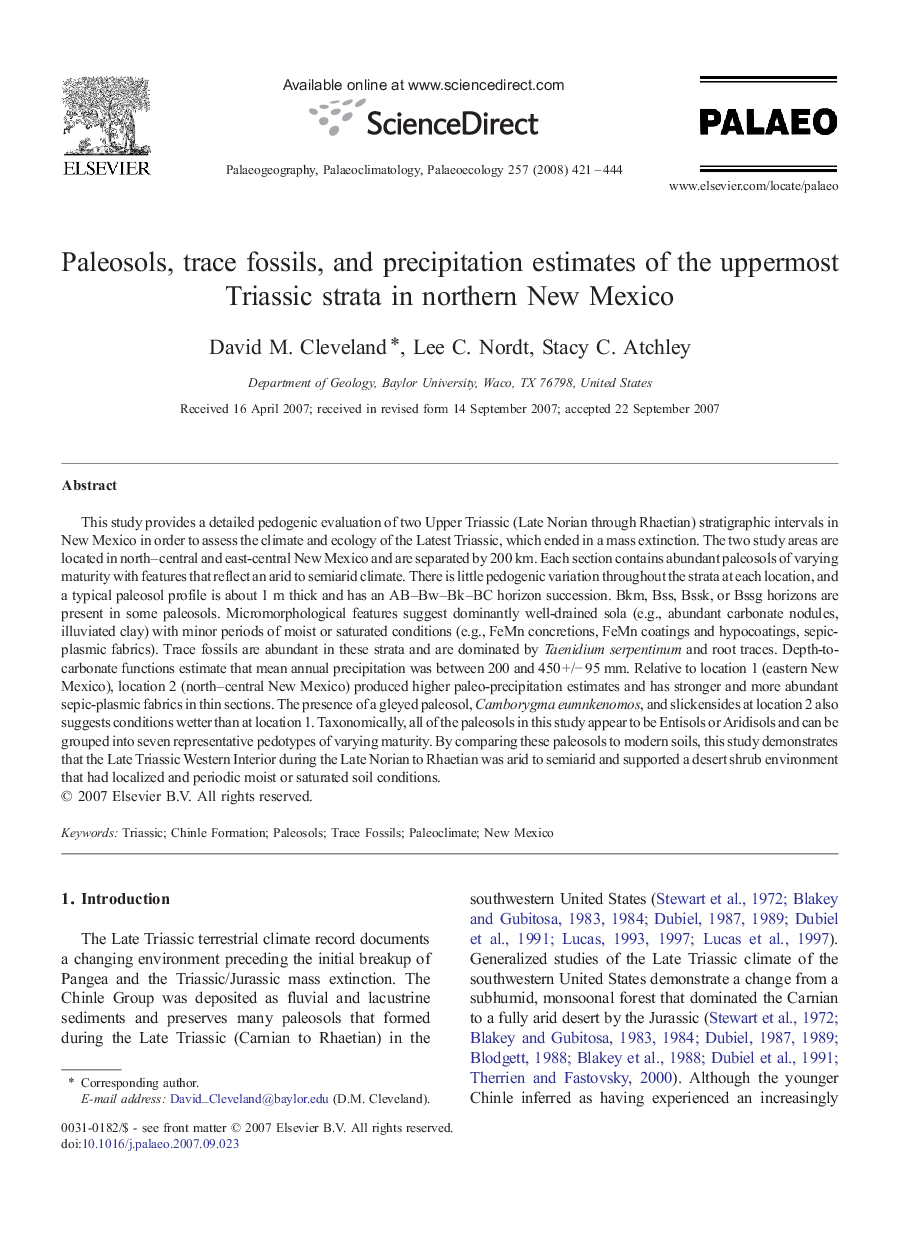| کد مقاله | کد نشریه | سال انتشار | مقاله انگلیسی | نسخه تمام متن |
|---|---|---|---|---|
| 4468691 | 1314152 | 2008 | 24 صفحه PDF | دانلود رایگان |

This study provides a detailed pedogenic evaluation of two Upper Triassic (Late Norian through Rhaetian) stratigraphic intervals in New Mexico in order to assess the climate and ecology of the Latest Triassic, which ended in a mass extinction. The two study areas are located in north–central and east-central New Mexico and are separated by 200 km. Each section contains abundant paleosols of varying maturity with features that reflect an arid to semiarid climate. There is little pedogenic variation throughout the strata at each location, and a typical paleosol profile is about 1 m thick and has an AB–Bw–Bk–BC horizon succession. Bkm, Bss, Bssk, or Bssg horizons are present in some paleosols. Micromorphological features suggest dominantly well-drained sola (e.g., abundant carbonate nodules, illuviated clay) with minor periods of moist or saturated conditions (e.g., FeMn concretions, FeMn coatings and hypocoatings, sepic-plasmic fabrics). Trace fossils are abundant in these strata and are dominated by Taenidium serpentinum and root traces. Depth-to-carbonate functions estimate that mean annual precipitation was between 200 and 450 +/− 95 mm. Relative to location 1 (eastern New Mexico), location 2 (north–central New Mexico) produced higher paleo-precipitation estimates and has stronger and more abundant sepic-plasmic fabrics in thin sections. The presence of a gleyed paleosol, Camborygma eumnkenomos, and slickensides at location 2 also suggests conditions wetter than at location 1. Taxonomically, all of the paleosols in this study appear to be Entisols or Aridisols and can be grouped into seven representative pedotypes of varying maturity. By comparing these paleosols to modern soils, this study demonstrates that the Late Triassic Western Interior during the Late Norian to Rhaetian was arid to semiarid and supported a desert shrub environment that had localized and periodic moist or saturated soil conditions.
Journal: Palaeogeography, Palaeoclimatology, Palaeoecology - Volume 257, Issue 4, 1 February 2008, Pages 421–444